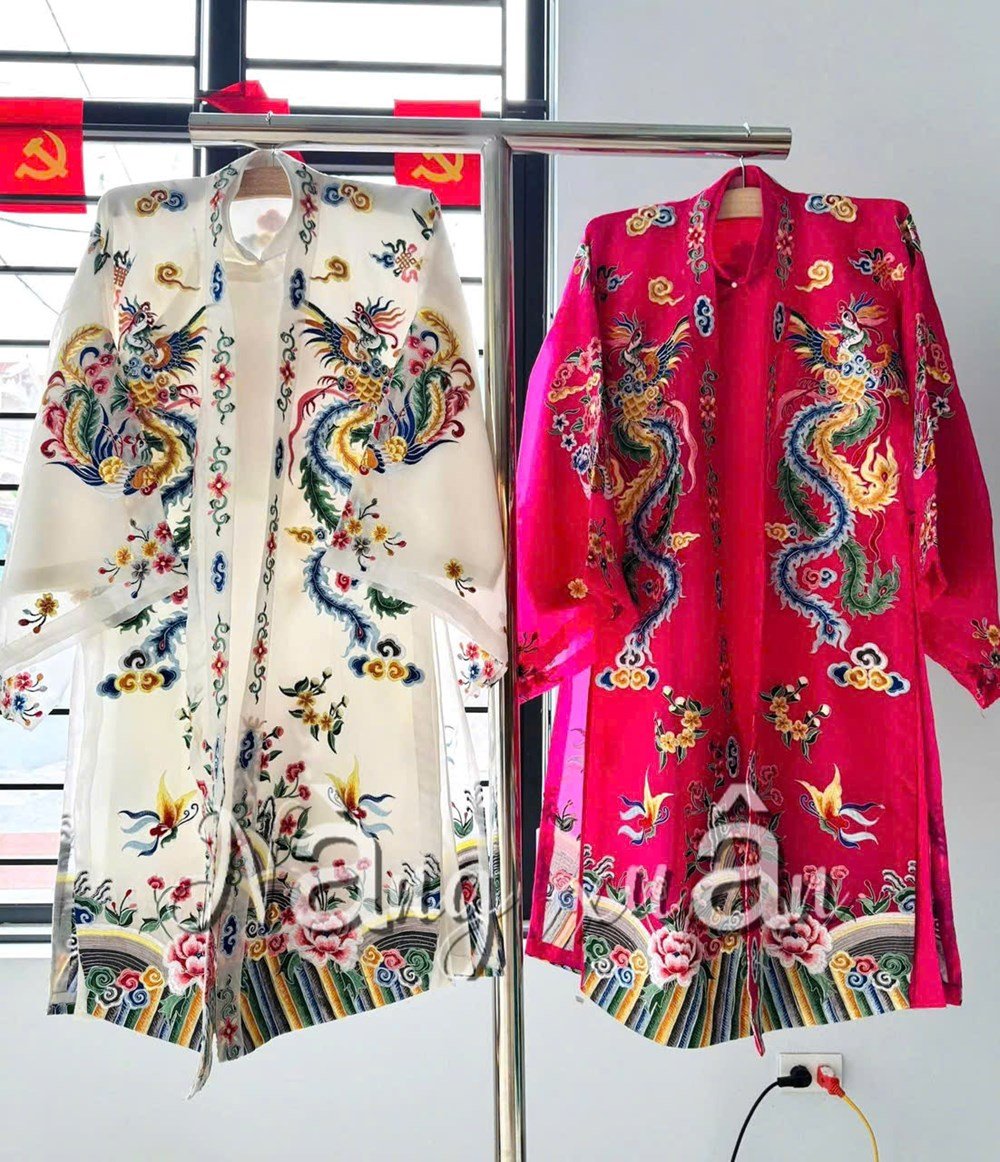
Embroidery is associated with beliefs.
Dong Cuu people still tell each other the story of Doctor Le Cong Hanh under the Le Than Tong dynasty. During his diplomatic mission to the North in the 17th century, he learned the sophisticated embroidery technique and brought it back to teach the villagers. Since then, his hometown has become the cradle of Vietnamese embroidery, where every house is attached to an embroidery frame and colored thread. From that tradition, Dong Cuu has formed a craft village specializing in embroidering scarves and royal ao dai - splendid ceremonial costumes serving the ritual of spirit mediumship in the worship of the Mother Goddess of the Three Realms.
Embroidering scarves and royal ao dai is a special job, because it is not only a tailoring profession, but also a spiritual and cultural ritual. Dong Cuu embroiderers are likened to "silent painters", because on the fabric, they embroider a magical world of dragons, phoenixes, clouds, water, sun, silver waves... Mr. Nguyen The Du, Chairman of Dong Cuu Embroidery Village Association shared: "Embroidering scarves and royal ao dai requires skillful hands and deep knowledge of beliefs, of each au pair, each character and adherence to strict standards of form, color, and motifs".
The craftsman must master the ancient embroidery technique, combining many complex operations: stuffing the thread, embroidering in a spiral, and drawing lines around the glitter to create a soft, sophisticated look. The technique of “drawing lines around the glitter” creates borders for clusters of clouds, dragon scales, and dragon claws; “stuffing the glitter upside down” is used for cloud motifs, knots, and curves. To embroider vivid images such as dragons, phoenixes, fish, birds, and the sun, the artisan also applies curling embroidery (twisting two large and small threads) or “knotting embroidery” with high stuffing, creating a striking three-dimensional effect.
On that fabric, each set of clothes becomes a vivid story: The clothes of the Kings are embroidered with winding dragons, the dragon's body glitters with glitter, the scales are embossed as if curling in the clouds, the eyes shine brightly on the golden thread - symbolizing the authority, spirit and intelligence of the hero "protecting the country and bringing peace to the people".
The Holy Mother's dress is as brilliant as a flying phoenix, with soft, spreading wings, and embroidered clouds and beads creating a sense of graceful movement, both luxurious and feminine. The ladies' dresses have a light color like morning dew, pure yet profound, evoking clarity and gentleness...
Keeping the old embroidery rhythm in the new life
More than 80% of Dong Cuu households are still engaged in embroidery, but the challenges are never small. Cheap industrial goods are flooding in, and the young generation is increasingly moving away from the profession. Someone once said: “If it were only to make a living, no one would sit for a month to complete a set of clothes.”
However, Dong Cuu artisans still persevere in their profession. They learn to combine hand embroidery with machine embroidery, both preserving the traditional spirit and adapting to the times. A simple set of scarves and clothes costs a few tens of millions of dong, but elaborate “buildings” of scarves and clothes, following ancient rituals and techniques, can cost up to several hundred million dong - that is the price of talent, of sincerity put into each needle and thread.
To make embroidery not just a memory of the past, Dong Cuu pays special attention to teaching and training the younger generation. From historical knowledge, culture, beliefs to classical embroidery techniques, dedicated senior artisans instruct their students on every craft tip, every color mixing method, and every stroke to create exquisite strokes. Thanks to that, the craft village is forming a generation of young artisans - both inheriting the quintessence of tradition and being creative to adapt to the times.
Among them is a typical face Nguyen Thi Xuan (28 years old), born into a family of three generations of embroiderers. Graduated from the National Economics University, Xuan used to work at a bank in Hanoi with a stable salary. But amidst the hustle and bustle of the city, she realized that true joy does not lie in numbers or paperwork, but in the embroidery frame, thread and cultural story hidden in each outfit. The decision to return to her hometown, continuing her ancestors' profession, became a turning point that led her on a journey of both preserving the profession and opening a new direction for the traditional Dong Cuu profession.
The decision was not easy. Xuan had to relearn the profession from her parents, patiently working day by day with operations that required endurance, concentration and respect. She opened a TikTok channel, where each video is both a slice of art and a way to promote products. Viewers can admire works of art: Co Bo's pure white dress, the brilliant red of Ba Chua Thac Bo, the sparkling glitter on Ong Hoang Muoi's shirt. Not just stopping at images, each video also introduces embroidery techniques, spiritual meanings and cultural stories associated with each costume, helping viewers understand more deeply the spiritual value of the profession.
Thanks to social networks, craft products have become closer to the public - from folk culture lovers to domestic and foreign customers. For Xuan, it is a way to retell the stories of his ancestors, bringing the spirit of the craft out of the old houses, into modern life through digital language but still maintaining the sophistication, aesthetics and solemnity.
Looking at each completed set of clothes, Xuan still could not hide her emotions: “Each set of clothes is a story, a memory and a spirit of the whole craft village. When embroidering, I feel like I am continuing the breath of my ancestors and want to send it to today's young generation.”
It is young people like Xuan, with their passion and creativity, who are breathing new life into Dong Cuu embroidery, so that the tradition not only survives but also shines in contemporary life.
Source: https://baovanhoa.vn/van-hoa/net-van-hoa-tam-linh-trong-doi-song-duong-dai-176674.html



![[Photo] President Luong Cuong chaired the welcoming ceremony and held talks with United Nations Secretary-General Antonio Guterres](https://vphoto.vietnam.vn/thumb/1200x675/vietnam/resource/IMAGE/2025/10/24/1761304699186_ndo_br_1-jpg.webp)
![[Photo] Prime Minister Pham Minh Chinh and South African President Matamela Cyril Ramaphosa attend the business forum](https://vphoto.vietnam.vn/thumb/1200x675/vietnam/resource/IMAGE/2025/10/24/1761302295638_dsc-0409-jpg.webp)

![[Photo] Solemn funeral of former Vice Chairman of the Council of Ministers Tran Phuong](https://vphoto.vietnam.vn/thumb/1200x675/vietnam/resource/IMAGE/2025/10/24/1761295093441_tang-le-tran-phuong-1998-4576-jpg.webp)
![[Photo] Prime Minister Pham Minh Chinh chairs conference on breakthrough solutions for social housing development](https://vphoto.vietnam.vn/thumb/1200x675/vietnam/resource/IMAGE/2025/10/24/1761294193033_dsc-0146-7834-jpg.webp)

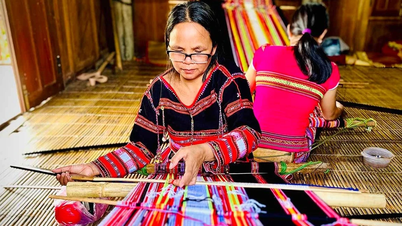

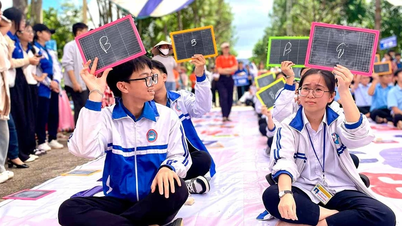
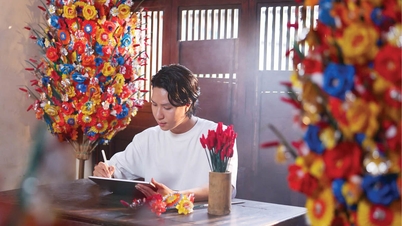

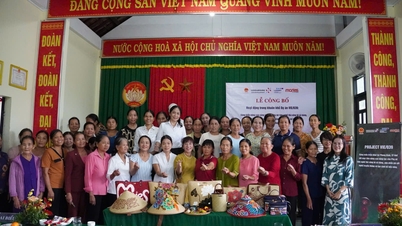
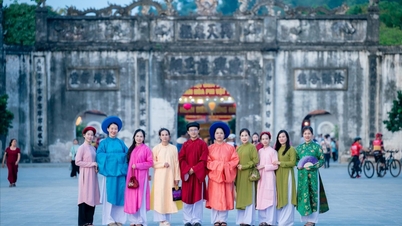

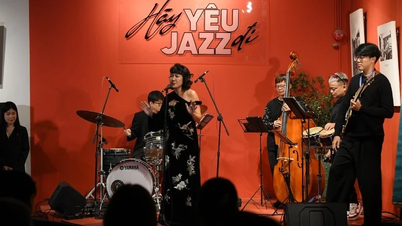

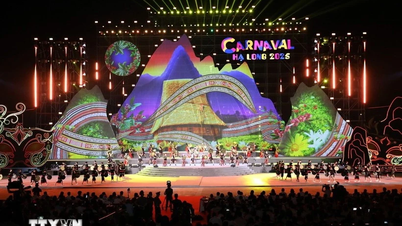





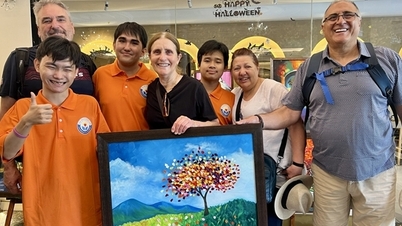










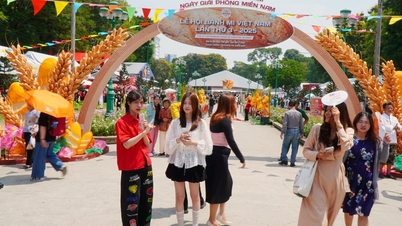




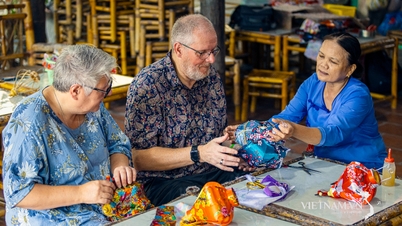

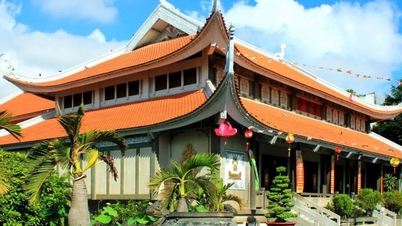



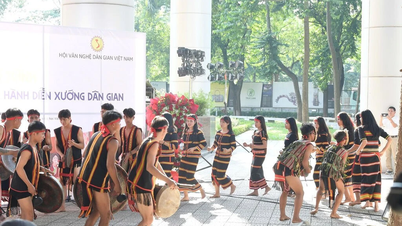



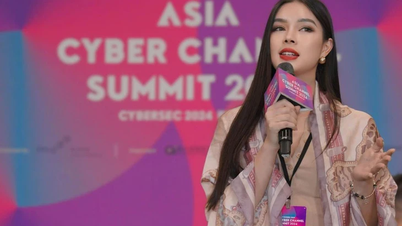

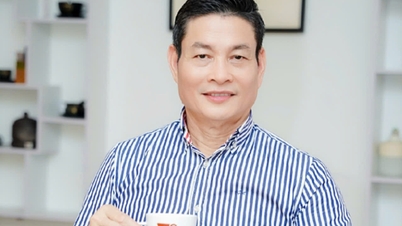

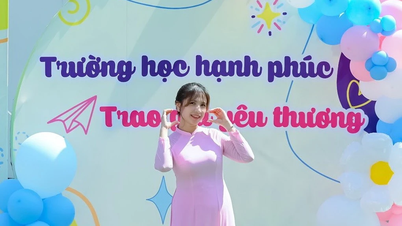

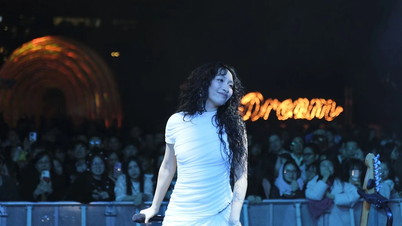












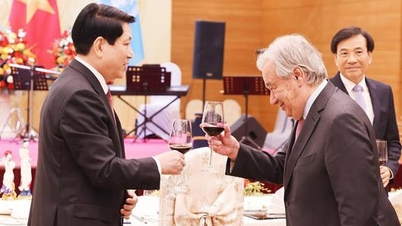







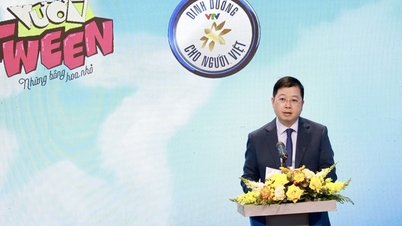
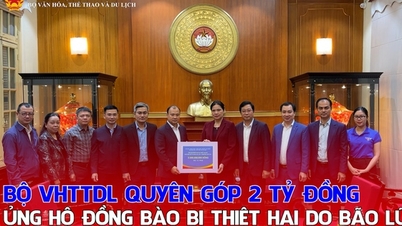


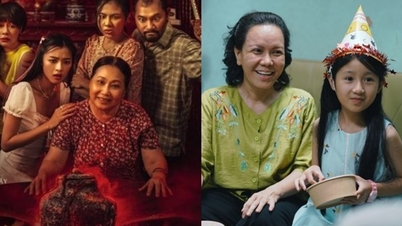



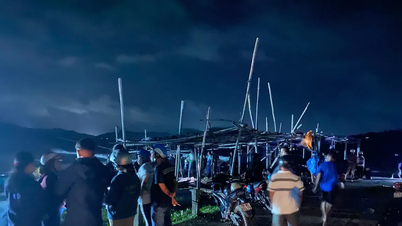



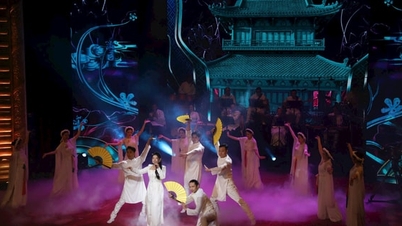

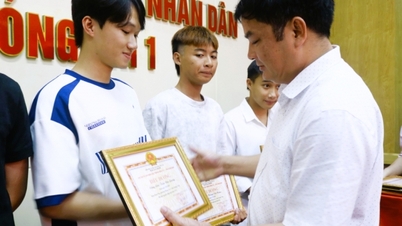










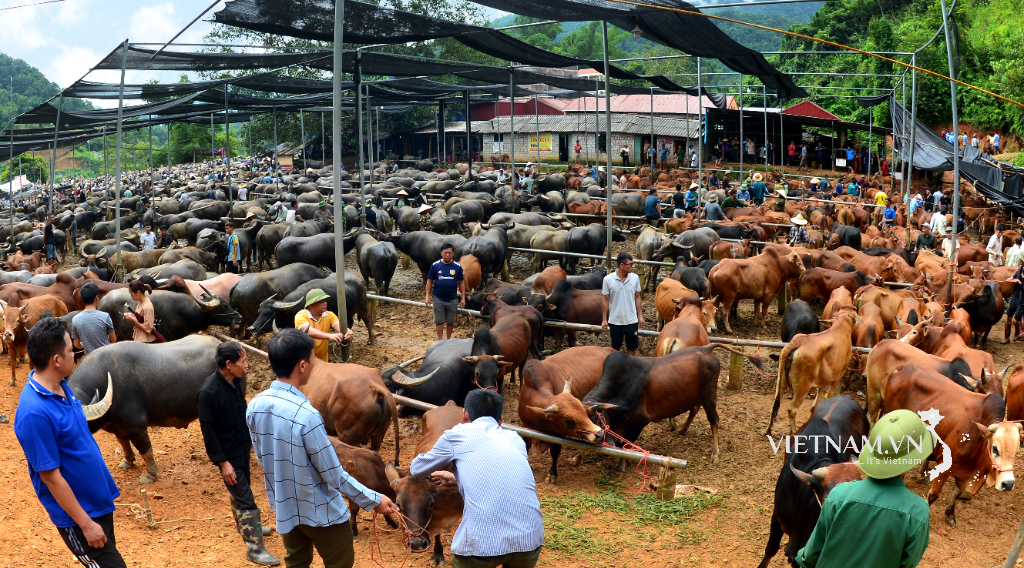


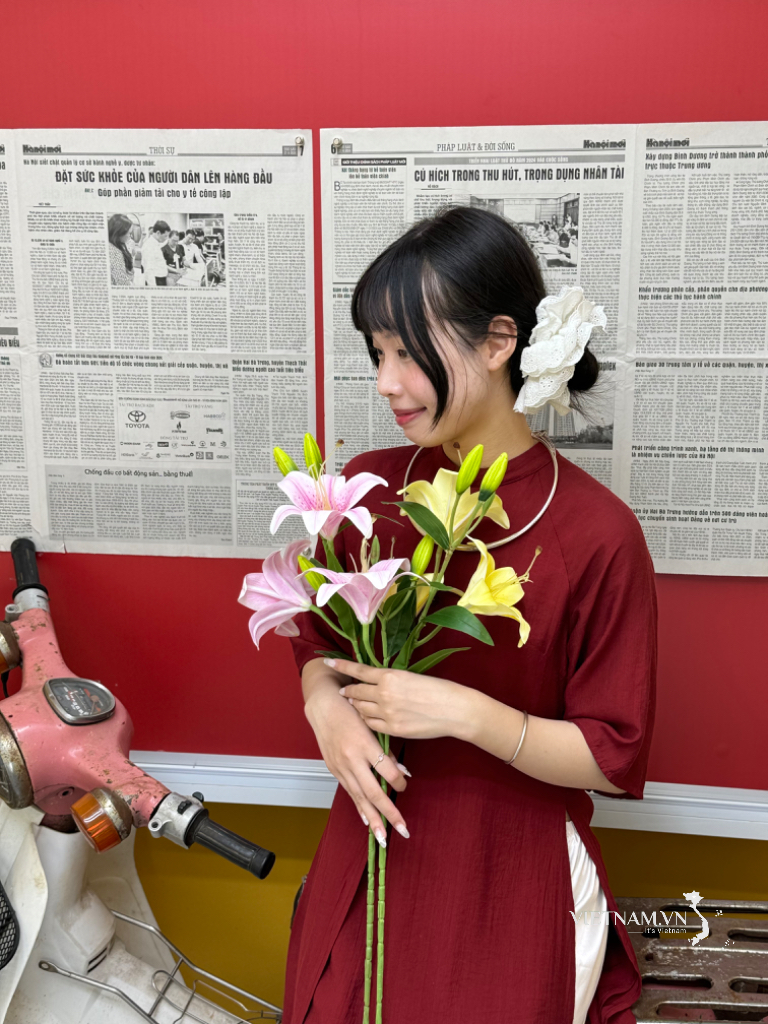
Comment (0)